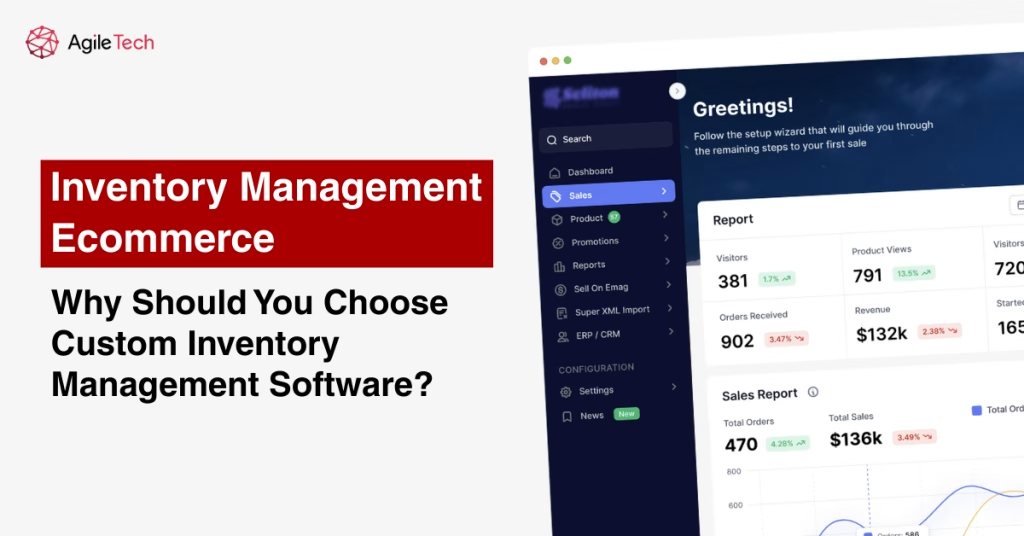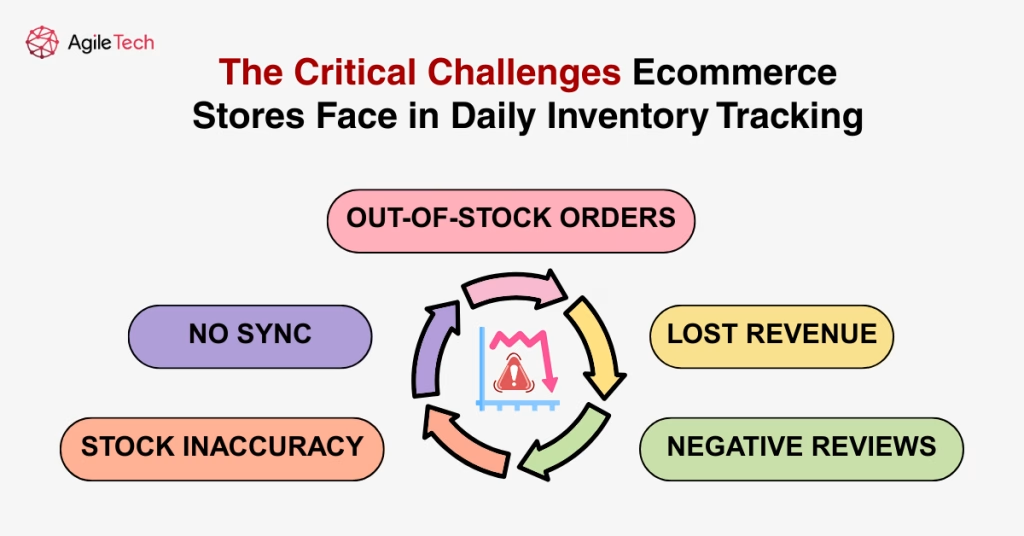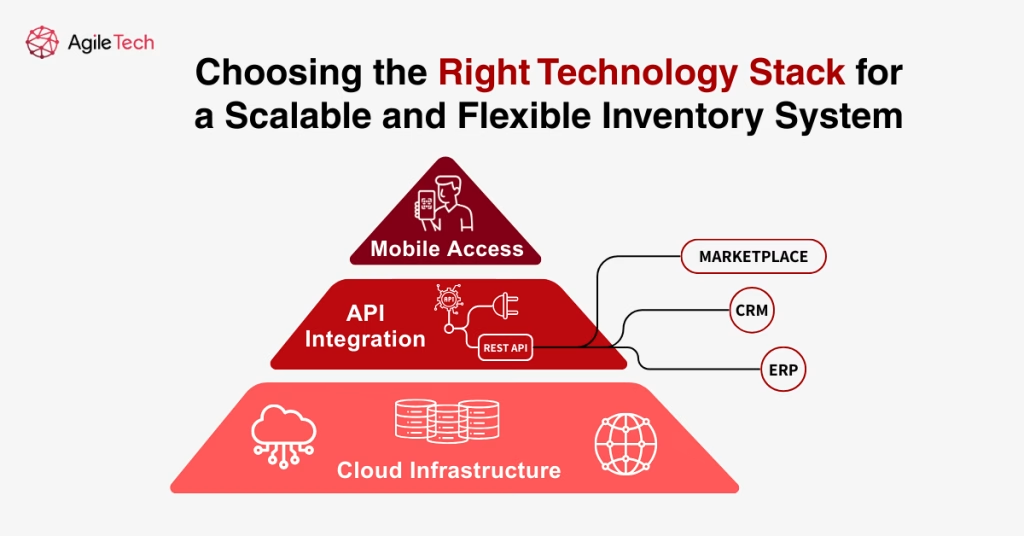Inventory Management Ecommerce – Why Should You Choose Custom Inventory Management Software?
Inventory management for ecommerce is no longer optional; it’s a strategic pillar for scaling online businesses. With increased demand, diversified channels, and consumer expectations for real-time availability, the need for effective ecommerce inventory tracking has never been higher. Online retailers must not only ensure accurate stock levels but also maintain operational efficiency and customer satisfaction. This guide explores how advanced inventory systems address chaos, improve tracking, and empower growth with customized solutions. As we head deeper into 2025, leveraging smart technology is key to transforming ecommerce inventory management into a competitive advantage.

- 1. Why Online Retailers Need Modern Inventory Management Ecommerce
- 2. Inventory Tracking Challenges Ecommerce Stores Face
- 3. What Every Smart Inventory Management System Should Include
- 4. Technologies Behind Scalable Ecommerce Inventory Solutions
- 5. Why AgileTech Builds Smarter Ecommerce Inventory Management Software
- Conclusion
1. Why Online Retailers Need Modern Inventory Management Ecommerce
Online retailers face fierce competition and high customer expectations in the digital landscape. Traditional inventory management methods often fall short in delivering the speed and accuracy required. Outdated systems struggle to cope with the rapid pace of online sales, resulting in stock discrepancies, missed opportunities, and lost revenue. Modern ecommerce inventory management provides the agility and intelligence needed to meet consumer demands and manage growing product lines across multiple platforms. It enables businesses to operate more efficiently, reduce errors, and improve order fulfillment. The shift from reactive to proactive inventory strategies is crucial for thriving in today’s e-commerce environment.
1.1. The Downside of One-Size-Fits-All Inventory Software
Pre-built inventory software may appear convenient initially, but it often lacks the flexibility needed for a dynamic ecommerce environment. These one-size-fits-all solutions are built for generic use cases and may not fully integrate with all the platforms an ecommerce store operates on. This lack of customization leads to data silos, syncing delays, and operational inefficiencies. Moreover, generic systems can hinder innovation, as businesses are forced to adapt their workflows to fit rigid software structures. For growing ecommerce brands, the inability to customize processes and integrations can slow down growth and limit opportunities for scaling efficiently.
1.2. Custom vs. Standard: What Works Best for Scaling Stores?
As ecommerce businesses scale, they encounter unique operational challenges that off-the-shelf inventory tools often cannot address. Custom Inventory Management Ecommerce system lows, and business models. These solutions offer scalability, adaptability, and better long-term ROI. In contrast, standard inventory systems may be easier to deploy initially but often require costly workarounds or third-party integrations as the business grows. Custom solutions also allow for the incorporation of advanced features like AI-driven demand forecasting, real-time inventory tracking, and multi-warehouse management, which are critical for expansion.
2. Inventory Tracking Challenges Ecommerce Stores Face
Inventory tracking is one of the most complex aspects of ecommerce management. With multiple channels, warehouses, and fulfillment centers, ensuring accurate and timely data becomes increasingly difficult. Ecommerce brands often face issues such as double-selling, inaccurate stock counts, and poor forecasting due to disconnected systems. These challenges are amplified by high customer expectations for instant availability and fast shipping. Inaccurate inventory tracking can lead to canceled orders, negative reviews, and lost customer trust. Therefore, understanding and addressing these challenges is crucial for maintaining a smooth and profitable operation in the ecommerce space.

2.1. Struggles With Multi-Channel Inventory Synchronization
Managing inventory across multiple platforms like Shopify, Amazon, eBay, and TikTok Shop presents a major hurdle. Each channel may have its own sales patterns and stock management requirements, making synchronization a complex task. Without a centralized system, inventory data can become fragmented, leading to issues such as overselling, order delays, and poor customer experience. Real-time syncing is essential to ensure that any stock changes on one platform are immediately reflected on all others. Failing to do so not only risks losing sales but also damages brand reputation due to fulfillment errors.
2.2. Lack of Real-Time Visibility Across the Supply Chain
Visibility across the supply chain is critical for informed decision-making and responsive operations. Many ecommerce businesses operate with delayed or incomplete inventory data, which hinders their ability to respond to demand fluctuations. Without real-time insights, it’s difficult to identify low-stock items, adjust procurement strategies, or reroute inventory between warehouses. This lack of visibility also affects forecasting and customer service. Implementing real-time ecommerce inventory tracking tools provides businesses with a clear overview of stock levels, enabling faster, data-driven responses and minimizing costly disruptions in the supply chain.
2.3. When Scaling Breaks Your Inventory Management Flow
As ecommerce stores grow, so do their operational complexities. More SKUs, more sales channels, and more customers place a significant burden on outdated inventory systems. Many legacy tools were not designed to handle high-order volumes or rapid growth, leading to slow system performance and limited reporting capabilities. Bottlenecks in inventory flow result in missed sales opportunities and increased overhead costs. To avoid these pitfalls, businesses must invest in scalable inventory management for ecommerce that supports automation, real-time tracking, and seamless integrations with other critical systems like CRM and ERP platforms.
3. What Every Smart Inventory Management System Should Include
Smart inventory management systems are designed to streamline operations and provide actionable insights for ecommerce businesses. At a minimum, they should offer real-time tracking, automated stock updates, predictive analytics, and seamless integrations. These features work together to enhance accuracy, reduce manual errors, and optimize inventory flow. An effective system should also provide a user-friendly interface and customizable dashboards for better decision-making. The goal is not just to track products but to create a proactive ecosystem that anticipates needs, prevents problems, and supports business growth across multiple sales channels and warehouse locations.
3.1. Unified Dashboard for Multi-Warehouse Inventory
A unified dashboard offers a centralized view of inventory across all warehouses, stores, and channels. This eliminates the need for switching between multiple platforms and enables managers to make quick, informed decisions. With a single source of truth, businesses can track stock transfers, monitor low inventory alerts, and balance supply across locations. This centralized control is particularly useful for ecommerce businesses that ship from multiple warehouses or operate both online and offline. A unified dashboard also simplifies staff training and improves coordination across departments, leading to more efficient workflows and faster fulfillment.
3.2. Predictive Reordering and Demand Forecasting
Modern inventory systems leverage data analytics and machine learning to predict future stock needs. By analyzing historical sales data, seasonal trends, and promotional cycles, these tools can automate the reordering process. This helps ecommerce businesses avoid overstocking slow-moving items or running out of best-sellers during peak seasons. Predictive reordering not only reduces holding costs but also improves customer satisfaction by ensuring product availability. For businesses operating at scale, these forecasting features are essential to maintain supply chain efficiency and minimize waste. They also support better financial planning and inventory investment strategies.
3.3. Seamless Integration With Ecommerce and Backend Systems
Integration is a cornerstone of effective inventory management. Your inventory system must work in harmony with ecommerce platforms, payment gateways, CRM tools, ERP systems, and logistics providers. These integrations ensure smooth data flow, real-time stock updates, and accurate order processing. Without integration, businesses risk errors such as double orders, missing items, or delayed shipments. Seamless integration also enables automation of routine tasks like updating product listings, syncing order statuses, and generating reports. This frees up staff time and reduces the potential for human error, resulting in a more streamlined and scalable operation.
Read more: How to Build a Software Inventory Management System: Key Features, Costs, and Development Guide
4. Technologies Behind Scalable Ecommerce Inventory Solutions
Technology plays a vital role in transforming ecommerce inventory management from a manual, error-prone process into an efficient, automated system. Choosing the right tech stack is essential for long-term success. Whether it’s cloud infrastructure, mobile apps, or API-driven platforms, these technologies provide the speed, reliability, and flexibility needed to scale. Businesses must consider not only the current demands but also future growth when selecting technology. A scalable inventory solution should be able to handle high volumes, integrate with multiple systems, and support new features without major overhauls or disruptions.

4.1. Should You Go Cloud or On-Premise?
The decision between cloud-based and on-premise inventory systems depends on a business’s needs for scalability, control, and security. Cloud solutions offer faster implementation, lower upfront costs, and easier remote access. They are ideal for ecommerce businesses that need flexibility and regular updates. On-premise systems provide more control over data and security, making them suitable for larger enterprises with specific compliance requirements. However, they often require a bigger investment in infrastructure and IT maintenance. Ultimately, the right choice aligns with your long-term goals and technical capabilities, ensuring you can manage inventory efficiently as your business evolves.
4.2. API-First Systems for Total Flexibility
API-first architecture enables ecommerce businesses to customize and extend their inventory management systems with ease. APIs allow for seamless integration with third-party tools, marketplaces, and proprietary applications. This means you can tailor your workflows, connect new sales channels, and build unique customer experiences without starting from scratch. API-first systems also support faster updates and innovation, allowing businesses to stay ahead of changing market demands. For growing ecommerce brands, this level of flexibility is crucial for maintaining operational agility and supporting continuous improvement across the supply chain.
4.3. Mobile Inventory Access for Real-Time Operations
Mobile accessibility allows teams to manage inventory on the go, improving responsiveness and reducing delays. Warehouse staff can scan items, update stock, and process orders directly from mobile devices, eliminating the need for desktop systems. This real-time access helps maintain accurate inventory levels, speeds up receiving and shipping, and enhances communication across teams. Mobile inventory solutions are particularly valuable for ecommerce businesses with distributed teams or multiple fulfillment centers. They also improve visibility for managers and executives, who can monitor operations and make decisions from anywhere, at any time.
5. Why AgileTech Builds Smarter Ecommerce Inventory Management Software

At AgileTech, we understand the complexities of managing inventory in a fast-paced ecommerce environment. That’s why we build tailored software solutions designed specifically for ecommerce and logistics businesses. Our approach combines industry-specific knowledge with advanced technologies to create inventory platforms that are scalable, secure, and adaptable. We focus on developing user-friendly interfaces, powerful analytics, and seamless integrations that work effortlessly with leading ecommerce platforms.
We believe in delivering more than just software; we deliver systems that grow with you. Our custom-built inventory management tools support predictive analytics, multi-warehouse synchronization, and real-time tracking to give you complete control over your supply chain. Whether you’re expanding to new sales channels or optimizing your fulfillment workflows, AgileTech provides the flexibility and innovation you need to stay ahead. With AgileTech as your technology partner, you gain a reliable solution that scales with your business and drives sustained success.
Read more: Inventory Management Software Cost in 2025: What You Should Know
Conclusion
Strategic ecommerce inventory management is a game-changer for scaling online businesses. With smarter tracking, predictive tools, and seamless integrations, companies can reduce stock issues and improve customer experiences. AgileTech offers custom-built solutions tailored to your unique inventory challenges. Let us help you turn chaos into control and unlock the next level of growth.
At AgileTech, we specialize in crafting custom inventory management software tailored to your unique ecommerce operations. Whether you’re running a multi-channel store or scaling a logistics-heavy platform, our expert teams help you automate processes, reduce operational friction, and unlock growth.
Let us help you turn chaos into control and unlock the next level of growth. Contact AgileTech today to start building your intelligent inventory solution. With smarter tracking, predictive tools, and seamless integrations, companies can reduce stock issues and improve customer experiences. AgileTech offers custom-built solutions tailored to your unique inventory challenges. Let us help you turn chaos into control and unlock the next level of growth.